What do you do when given a pair of new-to-EMS Exped sleeping pads to test (Exped Ultra 3R pads to be exact)? You grab your goEast co-editor (Doug Martland) and head for one of the best spots to camp in the White Mountains, the summit of Mount Carrigain, for a front-row seat to the Perseid meteor shower.
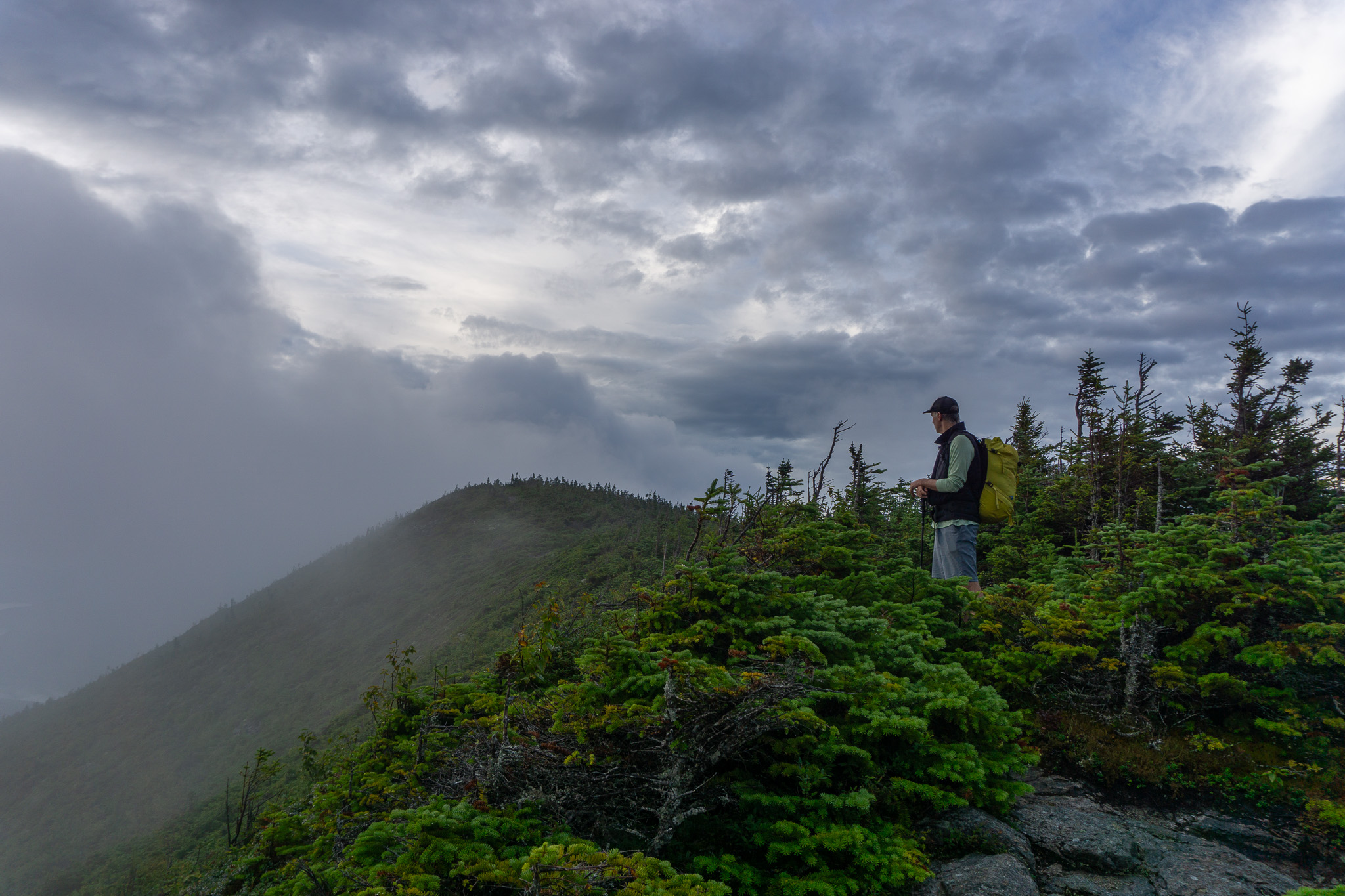
Mount Carrigain
Standing just under 4,700 feet, the summit of Mount Carrigain offers an incredible perspective of the Whites, with views in every direction, including the Pemigawasset Wilderness to the north, Presidentials to the east, the Sandwich Range to the south, and the iconic Franconia Ridge to the west. In fact, the summits of 43 of the other 47 New Hampshire 4,000-footers are visible from the top of Carrigain.
There’s a reason the mountain has been dubbed the “watch tower of the wilderness”; the fantastic viewpoint is why its summit has long been adorned with an observation deck. The top of Mount Carrigain was home to one of New Hampshire’s first fire towers—the original was built in 1910 and was rebuilt in 1940. Today, the peak is graced with a viewing tower built in 1979.
Mount Carrigain’s summit affords a hard-to-beat view of the Whites, and its remoteness and relative lack of light pollution make it a great spot to stargaze. It’s hard to think of a better place in New Hampshire to stare into the cosmos, something Doug and I learned firsthand on our last overnight on Carrigain.
The Itinerary
The plan was simple: hike to the top of Mount Carrigain for sunset, secure a camping spot, watch the meteor shower, wake up for sunrise, and make haste for the car and one of our favorite coffee shops—Mad River Coffee Roasters in Campton. But, to quote Robert Burns, “The best-laid plans of mice and men often go awry.”
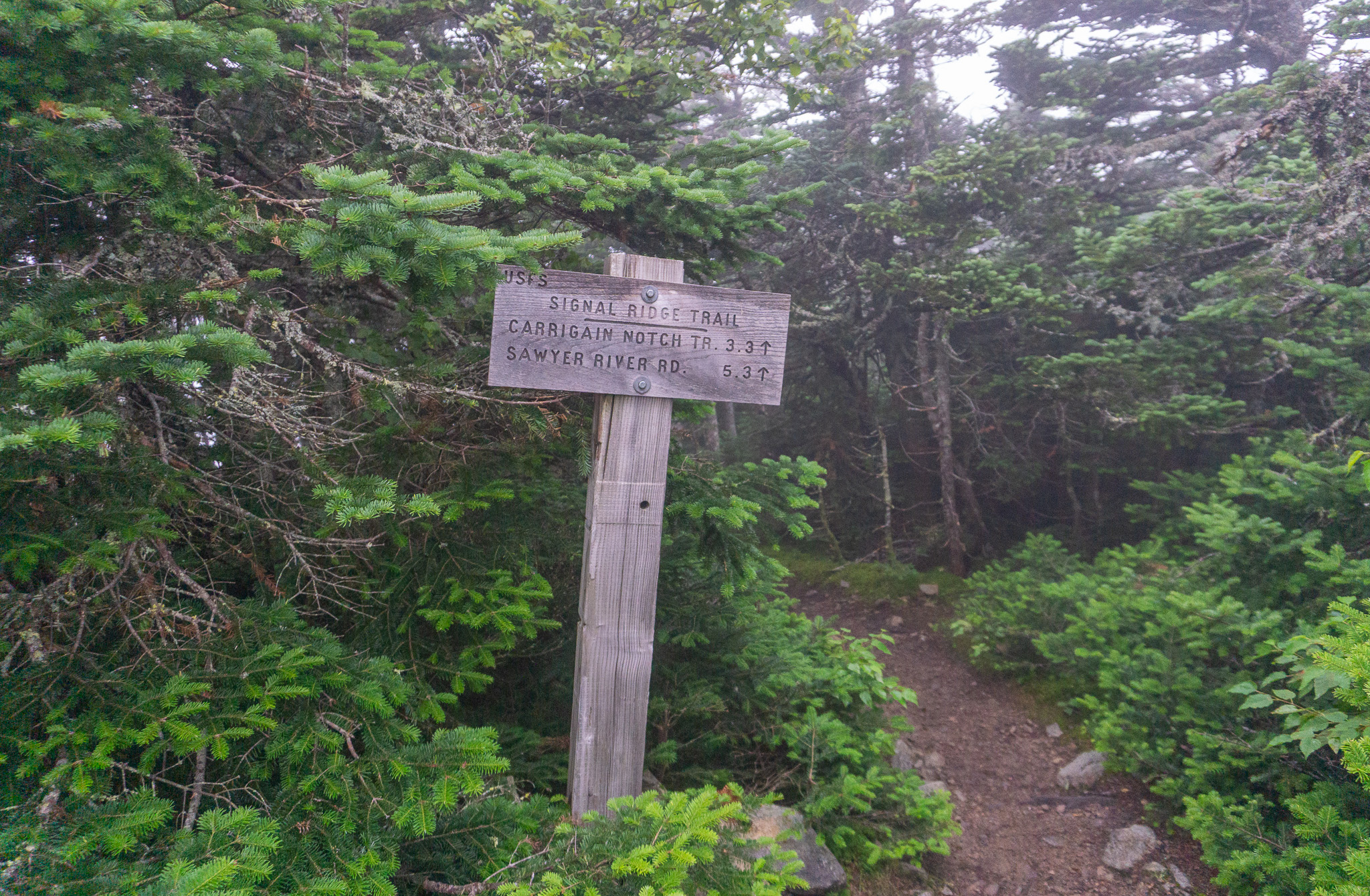
The Trip
The first hitch in our agenda occurred before we even left—unfavorable weather. Although the skies were clear and calm, stormy weather was in the forecast for the high summits, with everything from heavy rains to lightning to hail predicted. Undeterred, we forged ahead.
The Ascent
Our second challenge was a later-than-planned start because Doug taught a climbing lesson with the EMS Climbing School in the morning. This, combined with some traffic on our drive to the trailhead, meant we would need to hike the five-mile Signal Ridge Trail, gaining just under 3,500 feet in elevation in under two hours to catch the 7:30-ish sunset.
Since the pads were shipped to Doug and I hadn’t seen him in a few weeks, the first time I saw the Exped Ultra 3R sleeping pad was in the parking lot. Our time-crunched schedule didn’t allow for an elaborate unboxing ceremony, but I did notice the relative simplicity of the packaging. The only thing that didn’t make its way into my bag was the pad’s cardboard box. There was no plastic, ties, or other packaging to throw away when I got home. I would later discover that Exped uses plastic-free packaging for all of its products.
Early into our hike, it seemed as if the stars aligned for us, with clear cloudless skies and a quick pace. However, as the trail steepened toward the summit, the little sky we could see through the thick canopy was no longer cloudless. About a half-mile below the summit, we arrived at the trail’s namesake feature, Signal Ridge. Here we had enough light to hike but missed the sunset. Even worse, the clouds and fog rolling in above us were periodically obscuring the summit observation tower—bad news for our hope of seeing a meteor shower.
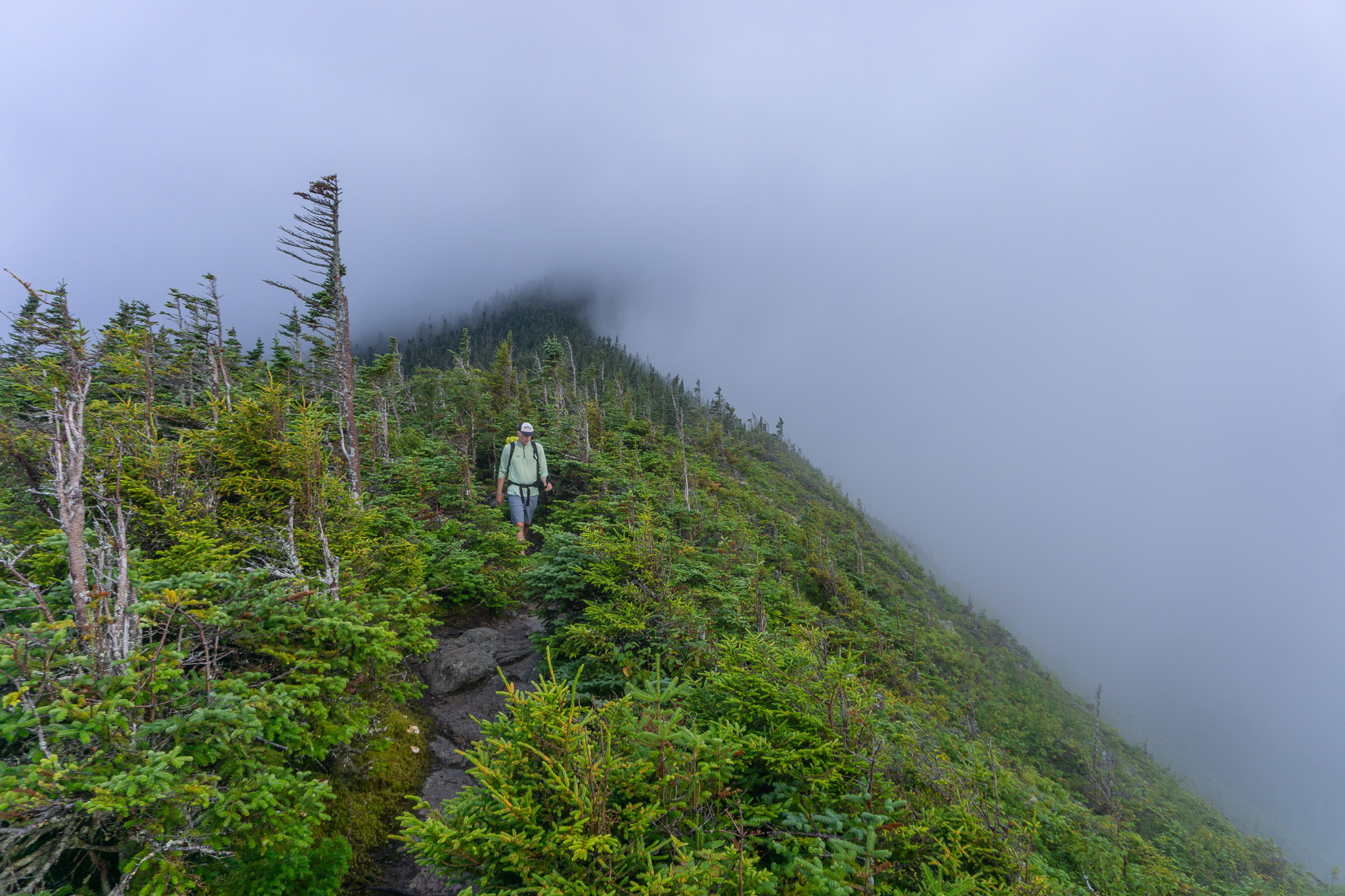
The Summit
Shortly thereafter, we made the summit, where the weather was taking a noticeable turn for the worse. The wind was picking up and the temperature was dropping along with the visibility. There were also more campers on the top than we expected, with all of the obvious dispersed campsites already filled. We moved on to a slightly more secluded site only to see it was also occupied.
Finally, we had a stroke of luck. The face of Eric Blanche, EMS’s hard goods designer, popped out of the tent—he had a similar idea and was field testing some new EMS products. Not only did he share his spot with us, but pointed us to the ideal place to pitch our tent. The beta was welcome, as the weather was deteriorating and it had started to sprinkle.
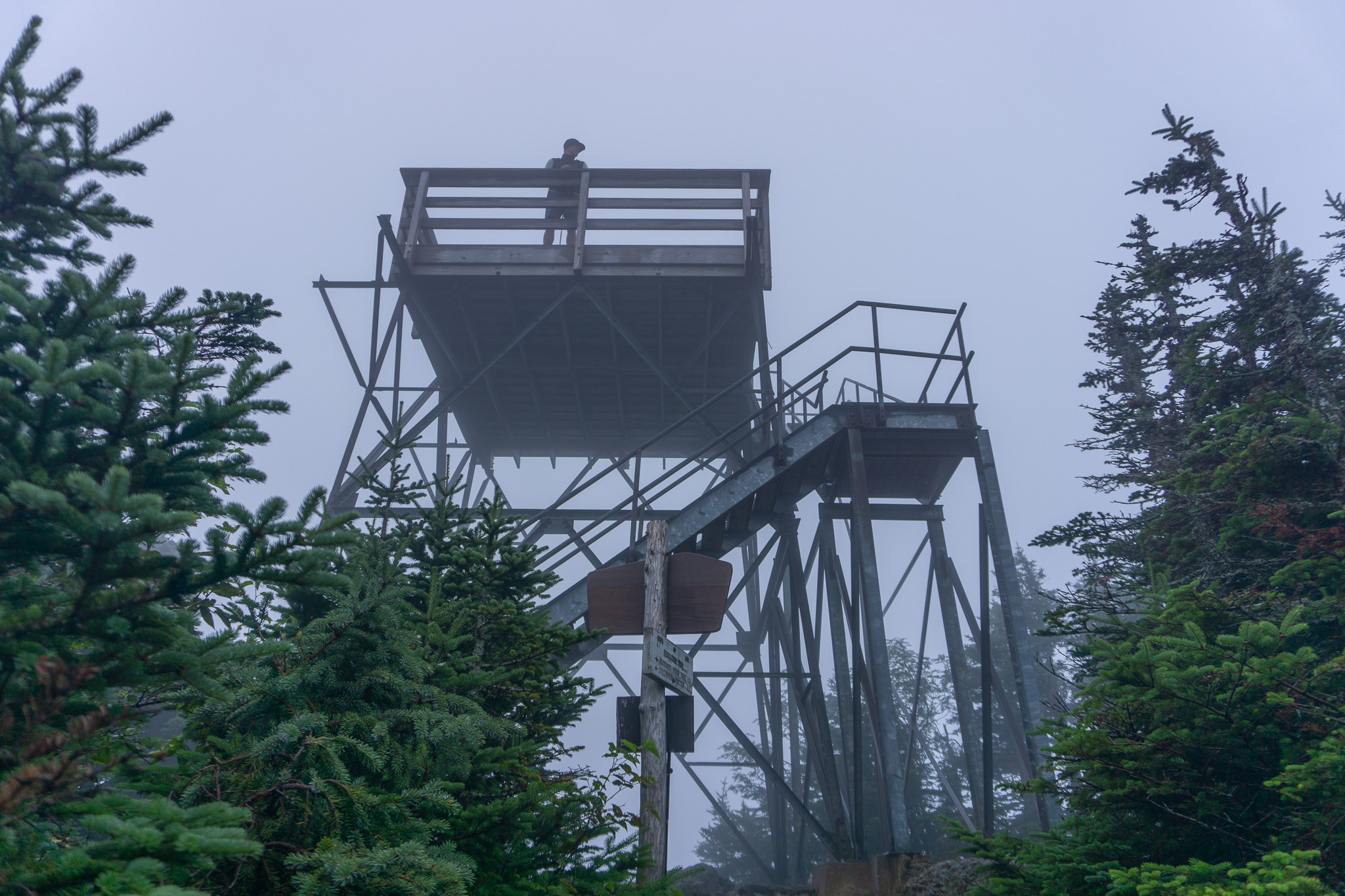
Camping on Mount Carrigain
After setting up camp—made much easier thanks to the Exped pad’s included Schnozzle inflation sack—we ate dinner, caught up with Eric, resigned ourselves to the fact that we wouldn’t see any meteors, and went to bed.
Apparently, we had a very stormy night, complete with heavy downpours, whipping winds, booming thunder, and crackling lightning. I wouldn’t know, though—I slept like a baby cuddled up in my trusty 10+-year-old EMS sleeping bag on a new three-inch-thick Exped Ultra 3R sleeping pad. I never suffered from any cold spots and stayed centered on my pad all night, presumably thanks to the “Comfort Cradle,” which is a design featuring oversized outer chambers that keep you in the ideal sleeping position.
By the time I woke up at first light, the bulk of the storm had passed and Eric had already departed—his plans were more ambitious than ours. Doug, meanwhile, recounted the storm, how it felt like at times our tent would get blown away, and his marvel at my ability to sleep through it. I don’t really know how I did it, as I’m typically a pretty light sleeper. I must have been very cozy.
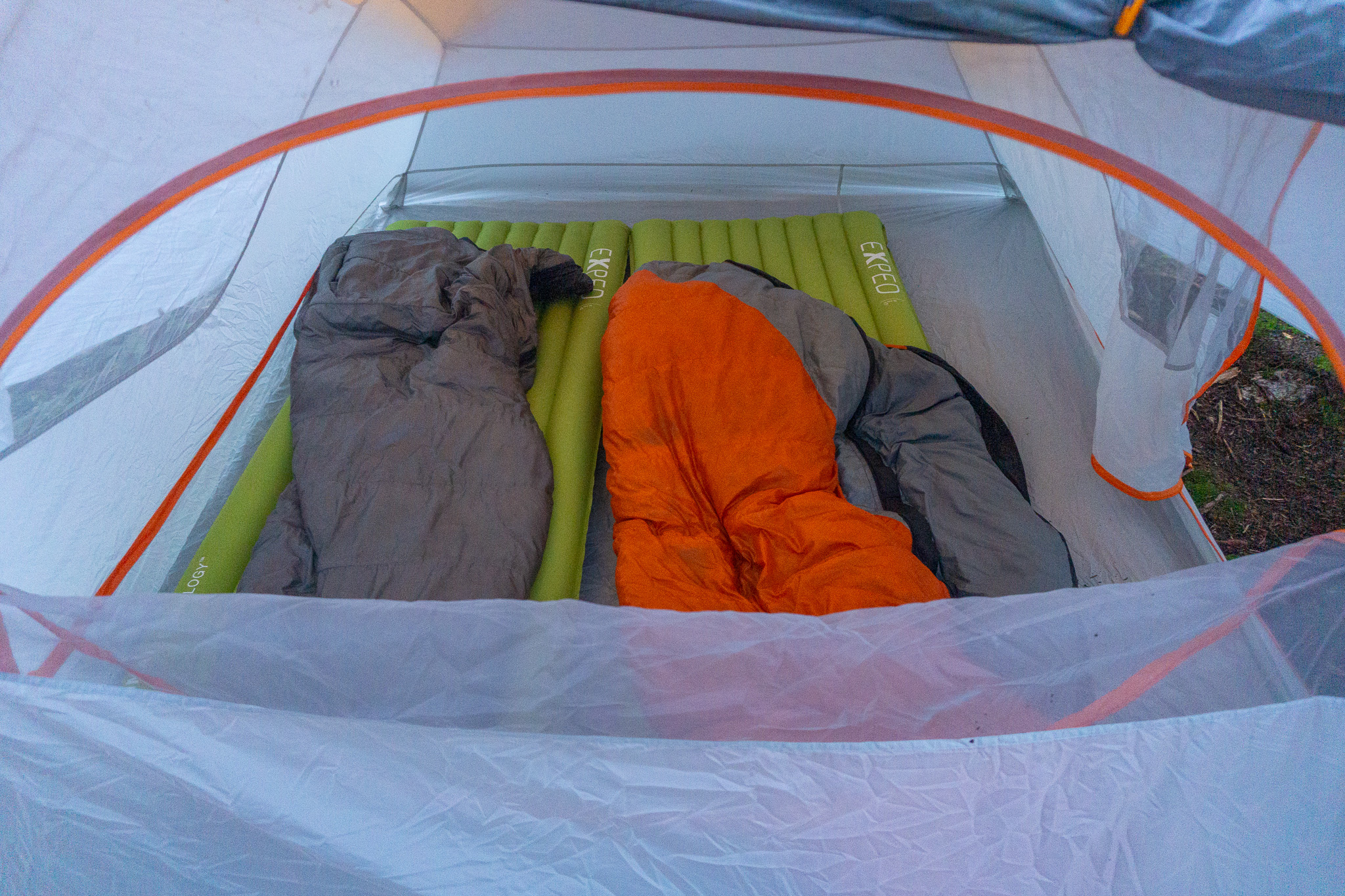
Breaking Down Camp
Before breaking down camp, we optimistically headed to the observation deck in hopes of seeing sunrise through a break in the clouds, but we weren’t that lucky. With our gear soaked and breakfast in town on the agenda, I packed my bag with a nod to expediency over organization. Here I came to appreciate the small packed size (12.6 x 5.5 inches) and low weight (18.3 ounces) of the Exped pad.
As a result of the questionable weather and following a recent minimalist bikepacking trip, I opted to err on the side of glamping for this trip—packing plenty of layers, lots of food, and a spacious three-person tent for the two of us. There was plenty of room for a pad when I left the trailhead the afternoon before with an organized pack, but space was at a premium in my hastily packed bag the next morning and the pad’s light weight was a blessing since the wet tent added some heft to my already portly pack.
The Descent
The one good thing about the morning’s inclement weather was that there was no need to linger—after packing up, we made fast time toward the car (and, ultimately, espresso).

Exped Sleeping Pads
The mission of our trip was to see sunset, sunrise, and meteors, along with testing our Exped sleeping pads. We failed miserably in three of our four goals, however, you couldn’t devise a better shakedown for a piece of gear. I was super impressed by the comfort, packability, and ease of the Exped Ultra 3R.
If you’re unfamiliar with Exped pads, the company has been manufacturing outdoor gear since 1997—first a tent, then expanding to other categories like sleeping bags, sleeping pads, and backpacks. Before creating Exped, the company’s founders (Heidi and Andi Brun) lived for nine months in the Canadian wilderness near the Arctic Circle, after which they became a European distributor for outdoor brands. After a few years as distributors, the Bruns found the spirit of the brands they worked with diluting and believed they could make better gear, so they started Exped.
One of Exped’s founding principles is “ohne schnickschnack,” or no unnecessary frills. Exped values form over function. Consequently, unnecessary and overly complex pieces are refined or removed entirely. I can attest the Exped Ultra 3R is pretty straightforward, with no fancy features or baffles—it has two ports (one for inflation and one for deflation) along with a stuff sack, repair kit, and inflation sack. In other words, just what you need to sleep comfortably under the stars (or through a storm). Another thing that I can confirm is that the pad is comfy.
It’s not just that Exped makes good products, it’s also a company you can feel good about supporting. All Exped sleeping pads are certified climate neutral through MyClimate—they offset the CO2 produced in their mats and use 100% recycled PFC-free fabrics. Exped’s factories are also bluesign and Oeko-Tex 100 certified, meaning they meet the highest levels of environmental protection.
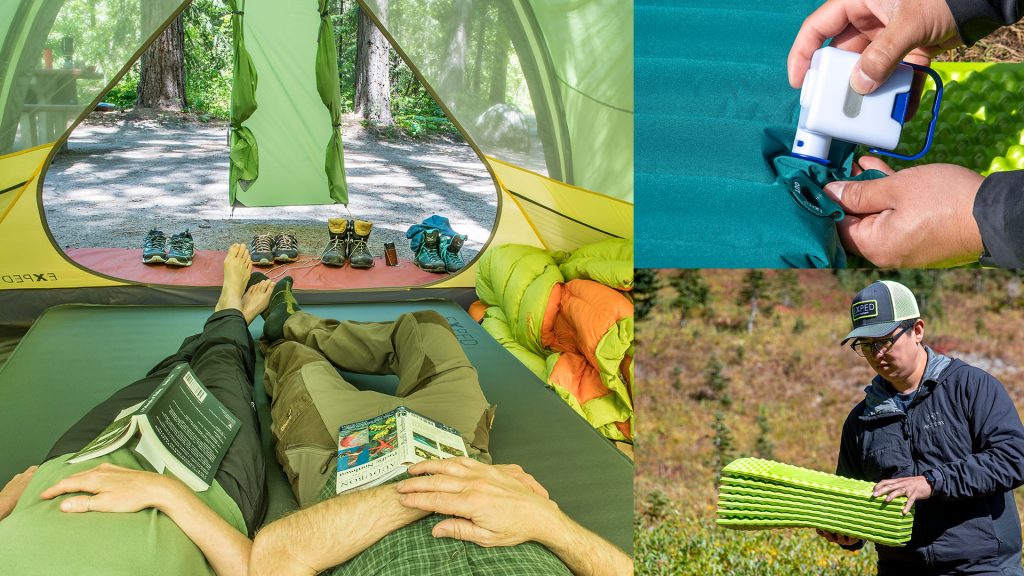
Put Exped in Your Pack
You can only tell so much about a sleeping pad after one night on it, but I’m looking forward to spending more time snoozing under the stars with the Exped Ultra 3R Pad. Hopefully, I will actually see them next time! The pad fits neatly in my kit, delivered the utmost comfort, and given Exped’s reputation for producing high-quality products, I feel confident I’ll enjoy using it for years to come.
If you’re in the market for a new sleeping pad, consider putting an Exped pad in your bag.
Tim Peck
A former child model, Tim spent a portion of his youth gracing the pages of Sunday paper advertisements for many now-defunct department stores. Living responsibility/rent-free with his parents into his thirties, Tim pursued climbing, skiing, and biking while accumulating an impressive amount of time in the mountains (and gear). Now almost grown up, he lives in central New Hampshire with his wife, Australian Shepherd, and cat. Relentlessly pursuing the dream, Tim's modest life ambitions are to ski all 12 months of the year, climb 5.12, and live in a van.




